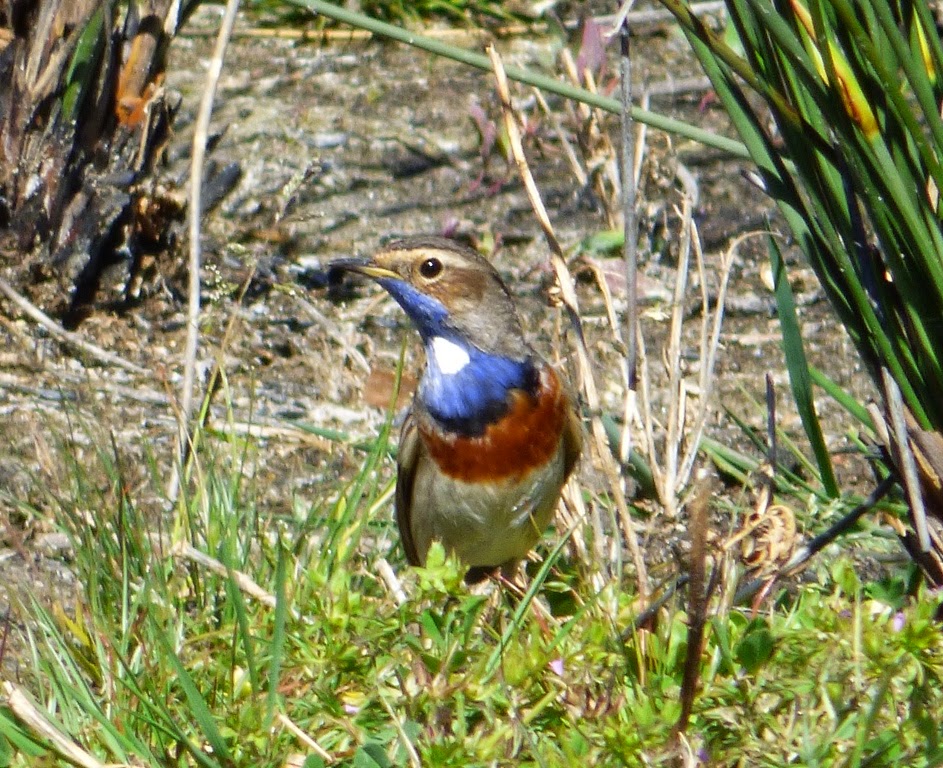 |
| Bluethroat (Martin Kelsey) |
It was the white spot which made us gasp. As it turned to face us, standing with elegance with its long legs, drooped wings and cocked tail, the male Bluethroat transformed. Having shown us its hind view, predominately a grey mousy-brown, with an orange base to the sides of its tail, face-on the difference could not have been more startling. It bore a throat and breast of pure sapphire, carrying a broad darkish band below which untidily merged onto an even broader dark brick-coloured cumberband. But what drew our gaze was its badge of immaculate white, centrally placed amidst the blue. It was almost reflective in its quality, like a medallion, illuminous even. It was hard to think of feathers being the medium for this - it was more like an inlaid little mirror in a Rajasthani embroidery.
 |
| Bluethroat (Martin Kelsey) |
I had a fondness for this particular Bluethroat, as I have watched it many times over the last few months, as it fed within its little winter territory, making mouse-like scurries across patches of open ground and pausing, as if to take its breath, upright, with tail held high. It was frequently embroiled with chases with its neighbour - another male, but not as smartly-plumaged as this one. It has been bold and engaging each time. But there was something different today. As we arrived, I heard a short burst of its song from deep in the Typha cover. A song of special places and memories for me....from Bluethroats atop montane broom high in the Gredos Mountains of Spain, to a walk I took beside the Indus River in Ladakh years ago where Bluethroats were singing every few strides I took. But what made today's reunion different was the spring sunshine touching its colours, which were the freshest and brightest I had ever seen them. This male had now completed the partial moult of its head and breast and slowly, imperceptively, over the last few weeks had replaced its feathers there. It was now ready with its pristine, fresh heraldic colours, and its song, to start its migration back to its breeding grounds. I wondered if this would be the last time I would watch him.
The white-spot on the breast told me that his destination would probably be somewhere in Central Europe and studies suggest that this is the origin of the increasing numbers of Bluethroats now wintering in Spain. It has become a bird quite easy to find despite its generally skulking behaviour (which reminds one that it belongs to the same genus as the nightingales) in marshy areas in winter here, especially also in the ditches beside rice fields, often betraying its presence with its tucking call, reminiscent of the sound of barbers' scissors snipping away. But what made this equinoxal encounter so special was to see this gorgeous character, completing its winter sojourn with us, now dressed fresh for spring and clearly poised to embark to another similar sized territory, perhaps two or three thousand kilometres to the north. I wished him well.





Comments
Abrazos
Sam & Dave